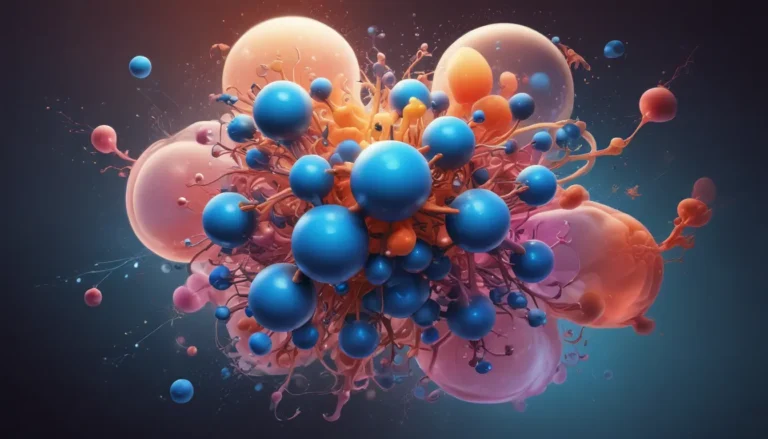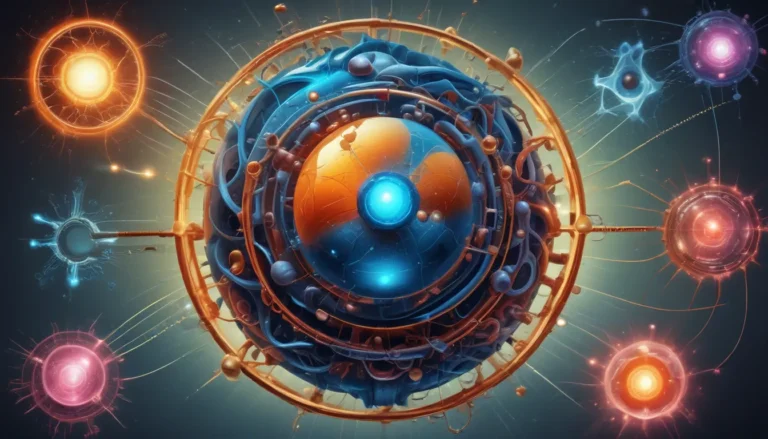A Note About Images: The images used in our articles are for illustration purposes only and may not exactly match the content. They are meant to engage readers, but the text should be relied upon for accurate information.
In the realm of chemistry, numerous theories and concepts shed light on the complexities of matter and its behavior. One such theory that stands out for its impact on our understanding of chemical reactions is collision theory. This theory, proposed by Max Trautz and William Lewis, asserts that chemical reactions occur when reactant particles collide with sufficient energy and proper orientation. Delving into the depths of collision theory unveils a realm of astonishing facts that underpin its significance in the realm of chemical kinetics and beyond. Let’s embark on a journey to discover 19 astonishing facts about collision theory that will enrich our understanding of this fundamental concept.
Unveiling the Origins of Collision Theory
The inception of collision theory dates back to the early 20th century when Max Trautz and William Lewis introduced the concept. Their groundbreaking idea proposed that chemical reactions hinge on the collision of reactant molecules with the requisite energy and orientation. This foundational theory laid the groundwork for unraveling the intricacies of chemical kinetics and revolutionized our comprehension of reaction mechanisms.
The Significance of Activation Energy
Central to collision theory is the notion of activation energy, the minimum energy threshold required for a chemical reaction to ensue. This pivotal energy barrier dictates the viability of breaking existing bonds in reactant molecules and forging new bonds in the resultant products. Activation energy serves as a critical determinant in the success of molecular collisions and the progression of reactions.
Factors Influencing Reaction Rates
An array of factors exert influence on the rate of a chemical reaction, as elucidated by collision theory. These factors encompass concentration, temperature, surface area, and the catalytic presence. Elevating reactant concentration, augmenting temperature levels, and incorporating catalysts stand out as strategies to escalate collision frequency and, subsequently, enhance reaction rates.
Unveiling the Impact of Temperature
A fundamental tenet of collision theory accentuates the relationship between temperature and reaction rate. Heightened temperatures correspond to augmented kinetic energy in molecules, enhancing the likelihood of successful collisions. This principle underscores the pivotal role of temperature in dictating reaction kinetics and rates.
Emphasizing Orientational Requirements
At the heart of collision theory lies the significance of molecular orientation during collisions. The proper arrangement of atoms in colliding molecules is paramount for facilitating new bond formation and advancing the reaction process. Incorrect molecular orientation may thwart successful collisions, underscoring the requisite precision in molecular alignments.
Applications Across Gas Phase Reactions
Collision theory finds robust applicability in gas phase reactions, where molecular motion and collisions are prevalent. This theory furnishes a framework for comprehending and predicting the behavior of gas-phase reactions, offering valuable insights into reaction dynamics and pathways.
Unraveling Reaction Cross-Sections
A pivotal concept introduced by collision theory is that of reaction cross-sections, delineating the effective area requisite for molecules to engage in a reaction. The magnitude of the reaction cross-section directly correlates with the probability of successful collisions, underscoring the importance of molecular interactions in driving reactions.
Transition State Theory Unveiled
Building upon collision theory, transition state theory delves deeper into the intricate mechanisms of reactions by introducing the notion of an activated complex. This high-energy intermediate state elucidates the transient nature of reactions and lends a nuanced understanding of reaction pathways and intermediates.
Industrial Implications of Collision Theory
In the realm of industrial processes, collision theory serves as a guiding beacon for optimizing reaction conditions and maximizing yields. By leveraging insights into reaction kinetics and mechanisms, scientists and engineers can design efficient reaction systems and enhance manufacturing processes.
Collision Theory’s Role in Elucidating Reaction Mechanisms
The analytical prowess of collision theory extends to unveiling the underlying mechanisms of reactions, shedding light on intermediate steps and molecular interactions. A keen understanding of reaction pathways fosters insights into the role of specific molecules and their contributions to overall reaction dynamics.
Validating Kinetic Models through Collision Theory
For scientists, collision theory offers a robust validation mechanism for kinetic models and reaction mechanisms. By juxtaposing experimental outcomes against the tenets of collision theory, researchers can corroborate the accuracy of their models and refine their grasp of reaction kinetics.
Harnessing the Influence of Pressure
An intriguing facet of collision theory elucidates the impact of pressure on gas-phase reactions, with heightened pressure correlating with augmented reaction rates. The intensified pressure engenders a surge in molecular collisions, thereby amplifying the likelihood of successful collisions and accelerated reaction rates.
Amplifying Reaction Rates through Surface Area
In heterogeneous reactions involving distinct phases, elevating the surface area of solid reactants emerges as a strategic approach to bolstering reaction rates. By exposing a greater number of reactant particles to the gas phase, the frequency of collisions escalates, heralding accelerated reaction kinetics.
Grappling with Deviations from Collision Theory
While collision theory furnishes a robust framework for comprehending chemical reactions, deviations from predicted behavior can manifest in intricate scenarios. Quantum mechanical effects, solvent nuances, and complex reaction pathways may engender deviations from collision theory’s projections, underscoring the dynamic nature of molecular interactions.
Unraveling the Rate Constant and Collision Frequency
Collision theory posits a direct correlation between reaction rate and the frequency of collisions among reactant molecules. The rate constant, a reaction-specific parameter, bridges the collision frequency and the rate of reaction, offering a quantitative lens into reaction kinetics.
Insight Into Biological Reactions
Beyond chemical domains, collision theory casts a luminous gaze on biological processes, illuminating enzyme-substrate interactions, protein folding dynamics, and other pivotal biological reactions. This cross-disciplinary reach underscores collision theory’s versatile applicability in unraveling molecular intricacies.
Evolution of Collision Theory
Through ongoing advancements in experimental methodologies and computational techniques, collision theory has undergone a transformative evolution. These progressive strides have deepened our comprehension of reaction kinetics, fostering the ubiquitous integration of collision theory across diverse scientific realms.
Navigating Through Limitations
While lauded for its revelatory insights, collision theory harbors inherent limitations. The theory’s premise of all collisions being effective and the exclusive reliance on collision frequency to dictate reaction rates may overlook other critical factors such as steric effects and intricate molecular interactions, warranting a nuanced appraisal.
Impact on Chemical Education
The profound influence of collision theory transcends theoretical realms, permeating educational landscapes and shaping our discourse on chemical reactions. This theory acts as a pedagogical cornerstone, elucidating fundamental concepts and empowering learners to navigate the intricate terrain of reaction kinetics and mechanisms.
Embracing the World of Collision Theory
The bedrock of collision theory reverberates with astounding revelations that unveil the nuanced tapestry of chemical reactions. From activation energy’s pivotal role to the intricacies of molecular collisions, each facet of collision theory beckons us to explore the boundless realms of reaction kinetics. By immersing ourselves in the realm of collision theory, we unearth a treasure trove of insights that propel us towards innovation and discovery.
Conclusion: Charting New Horizons with Collision Theory
In culmination, collision theory emerges as a beacon of understanding in the realm of chemical reactions, illuminating the pathways of molecular interactions and transformation. By appreciating the astonishing nuances of collision theory, we equip ourselves with a discerning lens to decipher the mysteries of chemical kinetics and unravel the enigmatic intricacies of molecular dynamics. Let us forge ahead, embracing the profound revelations of collision theory, and embarking on a voyage of discovery that transcends the boundaries of chemistry.
FAQs: Navigating the Landscape of Collision Theory
-
What is collision theory?
Collision theory is a foundational concept in chemistry that elucidates how chemical reactions arise from molecular collisions with the requisite energy and orientation. -
Who proposed collision theory?
Collision theory was first proposed by Max Trautz and William Lewis in the early 20th century, ushering in a paradigm shift in our comprehension of reaction kinetics. -
Which factors influence the rate of a chemical reaction according to collision theory?
Key factors that impact the rate of a chemical reaction according to collision theory encompass temperature, concentration, surface area, and the catalytic presence. -
Why is activation energy pivotal in collision theory?
Activation energy stands as a critical determinant in collision theory, dictating the threshold energy required for reactant molecules to surmount and initiate a chemical reaction. -
How does molecular orientation shape reaction rates?
Molecular orientation plays a pivotal role in collision theory, ensuring the alignment of reactant molecules in a manner conducive to facilitating new bond formation and propelling reaction kinetics. -
Can collision theory be universally applied to all chemical reactions?
While foundational, collision theory may encounter limitations in complex reactions that entail intricate molecular interactions beyond mere collisions, delineating the dynamic nature of reaction dynamics. -
How does collision theory resonate within the realm of pharmaceuticals?
Collision theory empowers pharmaceutical researchers to discern how drugs interact with target molecules, paving the path for designing more efficacious medications through optimized reaction conditions. -
What role do catalysts play in collision theory?
Catalysts serve as catalysts bridge in collision theory, catalyzing reactions by offering an alternative pathway with reduced activation energy. This catalytic facilitation expedites reactions by lowering the energy barrier for effective collisions.
Embarking on a Quest of Discovery
As we embark on a quest of discovery through the corridors of collision theory, we unravel the intricate tapestry of chemical reactions and molecular phenomena. The revelations gleaned from collision theory not only illuminate the pathways of reaction kinetics but also kindle a spirit of inquiry and innovation that transcends disciplinary boundaries. Let us embrace the astonishing world of collision theory, delving into its nuanced facets and forging new horizons in the wondrous realm of chemistry.






